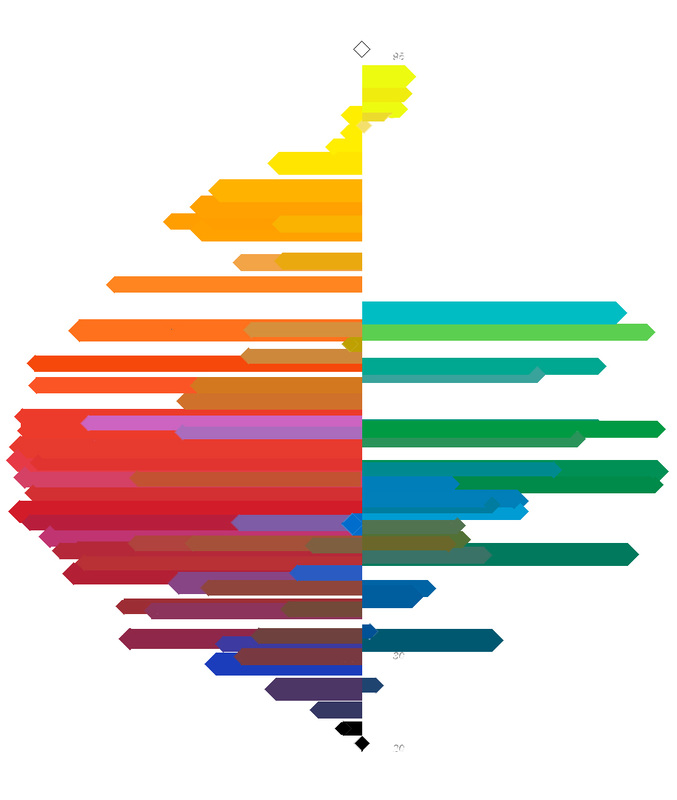| A notional colour spectrum based on human visual perception from white to black (based on CIELAB colour space (Hoffman 2003) and Bruce MacEvoy’s Artist’s Value Wheel (MacEvoy 2005). | Human vision utilizes only three types of colour-sensitive cone cells - red, green and blue – and hues with frequencies between these (such as yellow, cyan and magenta) are perceived through stimulus to multiple cone cells. For example the frequency of yellow light falls between red and green and is detected by stimulus to both the red and green cone cells and as a result appears “lighter” than green even though its frequency is not as “high”. In this way, visual perception differs greatly from auditory perception. The illustration to the left shows the a notional colour spectrum based on human visual perception. The notional colour spectrum provides a palette from which colours representing sonic features or instruments might be chosen in a musical score. For most people this chart appears segmented into families of similar hue (yellows, oranges, tan, green-blue etc) and distinct but related hues may lend themselves to the representation of timbral variation within a sonic feature or instrument. As the number of represented features increases, however, so does the difficulty of discriminating between hues required. Green-Armytage suggests a palette of 27 tones based on white, yellow, orange, lime, green, turquoise, blue and purple and their lighter or more saturated counterparts, as a template for colour representation in charts such as subway maps and data visualisation (Green-Armytage 2001). |
| Grisolm and Palmer have explored the idea of using cross-modal associations to define semantically sound mapping a range of instrumental timbres against colours in a two dimensional red/green: yellow/blue field. The illustration to the right shows their distribution of instrument timbre to colour (a.) and the suggested semantically appropriate colour and colour range for five instruments (b.). Grisolm and Palmer have also demonstrated that “color choices for multiple timbres are well predicted by an average combination of the component timbres” (2013). Interestingly Grisolm and Palmer also have observed, for example, that the yellow-blue value is correlated with attack time, whereas average red-green value is correlated with spectral brightness (2013). | Colour-to-sound associations between instrument timbre and colour (from Grisom and Palmer 2013), b.) Implied “semantically sound” hues for five instruments. |







 RSS Feed
RSS Feed
